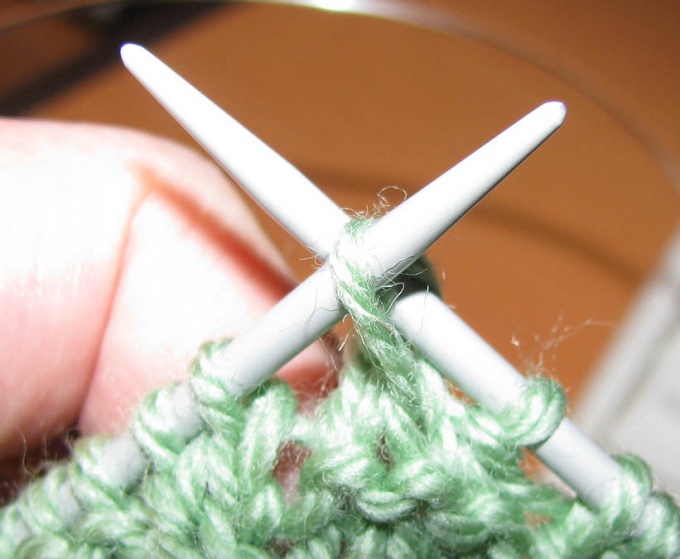You will need
- knitting needles, yarn
Instruction
1
Deflated (or missed) loop are always considered a defect that a knitter ought to eliminate, ie, up her dropped stitch with crochet. Today it is possible not to do that. Conversely, you can specifically schedule such absences to get the most fashionable option.
When knitting stitch, you can obtain two "tracks": vertical and horizontal openwork track. Options promazyvanija such loops too much.
If you want to get a vertical track, then tie the loop to the top of the part, then lower it down, while in the extended place get delicate track. In the case of a horizontal openwork tracks, you should knit as follows: knit one row with SC (the more nacido in one place, the higher the loop after blooming), next row knit, descending nakida and pulling the loop. Then knit by following the specified pattern (e.g., the front / reverse or criss-crossing groups of elongated loops).
When knitting stitch, you can obtain two "tracks": vertical and horizontal openwork track. Options promazyvanija such loops too much.
If you want to get a vertical track, then tie the loop to the top of the part, then lower it down, while in the extended place get delicate track. In the case of a horizontal openwork tracks, you should knit as follows: knit one row with SC (the more nacido in one place, the higher the loop after blooming), next row knit, descending nakida and pulling the loop. Then knit by following the specified pattern (e.g., the front / reverse or criss-crossing groups of elongated loops).
2
There are lighter "images" drop-stitch. Determine where you want to pull a loop. In the front row gain yo. Promazyvaya the wrong side, whip yo, not promazyvaya it.
3
Another very interesting version of the stitch called "Rain". You can get it if you first add a loop of broaches, and then get it down. The only drawback is that with the binding, even the hinges, are located on the 2-3 rows below the lowered loop is losing integrity. To strengthen the "construction" of the knit loop on the left and right of the spread loops are tightly crossed. This "picture" (it can be positioned on the product in a chaotic manner) looks great on the tent surface.
4
First, practice counting nacido and descents, the number and location of which must be strictly controlled.
Second, dissolve the sample, you will be able to determine how much yarn you need for your product.
By measuring associated sample, remember that you need to measure the sample is lowered loops. Some types of drop-stitch greatly increase the size of the product.
Second, dissolve the sample, you will be able to determine how much yarn you need for your product.
By measuring associated sample, remember that you need to measure the sample is lowered loops. Some types of drop-stitch greatly increase the size of the product.
